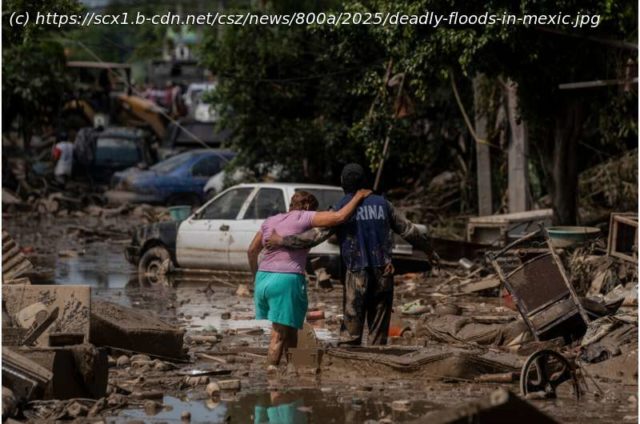The most recent torrential rains in east-central Mexico, which have left at least 72 dead and dozens more missing, have raised questions again about the government’s ability to alert people to severe weather in time.
The most recent torrential rains in east-central Mexico, which have left at least 72 dead and dozens more missing, have raised questions again about the government’s ability to alert people to severe weather in time.
Authorities continue to describe the days of torrential rain last week that set off landslides and river flooding as unpredictable. Residents talk about never having seen anything like it. But researchers say what was considered normal before no longer exists because climate change has accelerated these events and made them more frequent. And that requires preparation.
„We’re being more and more affected by these phenomena and we can’t go on like this, failing by not knowing what to do and not having … adequate warning“, said Christian Domínguez, a researcher at the Atmosphere and Climate Change Institute at Mexico’s National Autonomous University. She recalled that last year’s crises were drought-related and this year, it’s the rain.
It is a pending issue for Mexico and for countries with more resources and advanced technology like the United States, which experienced a devastating flash flood in Texas this year that killed at least 136 people. Experts say society and governments appear to be stuck in the past and have not accepted that severe weather is now the norm.
In Mexico’s case, it’s president for the past year, Claudia Sheinbaum, is a trained scientist with a background in climate change. But while she expressed willingness this week to review prevention protocols, she didn’t mention climate change and insisted it was impossible to predict with precision how much rain was going to fall in some places.
Start
United States
USA — IT Deadly floods in Mexico another sign of need for improved severe weather...






